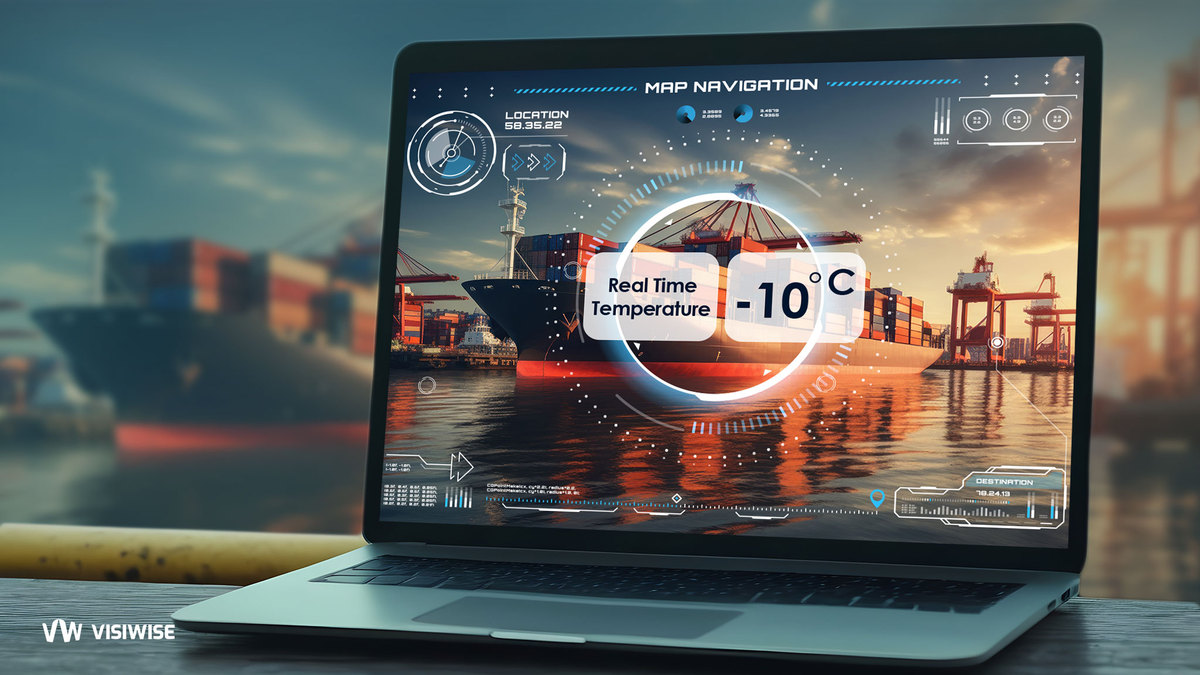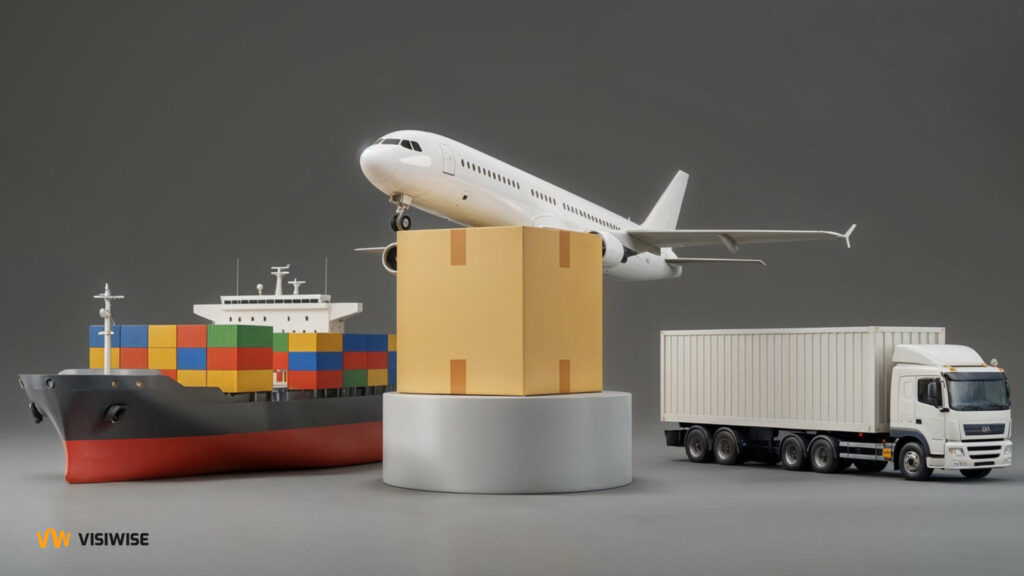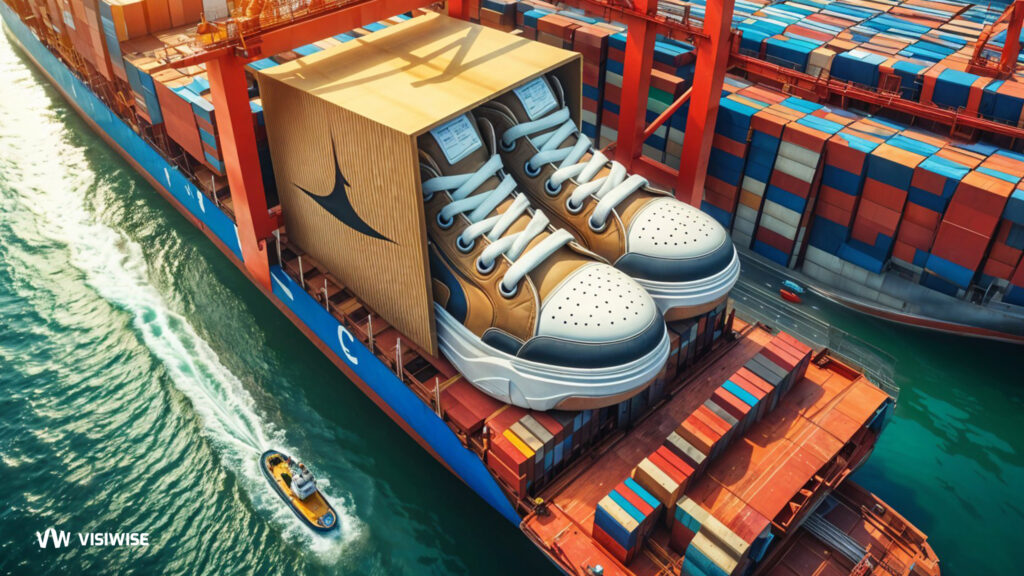Effective transportation of perishable goods, particularly fruits and vegetables, is a nuanced challenge for shippers. Maintaining the optimal condition of these products throughout the entire journey is paramount. Reefer container tracking emerges as a crucial solution in this scenario. These specialized containers offer a controlled environment, addressing factors like temperature, humidity, and ventilation during transportation.
When dealing with the export of perishable goods, the role of ocean freight services becomes pivotal. Reefer containers play a significant role in this context, providing the necessary means to uphold the freshness and quality of fruits and vegetables. By ensuring a controlled environment, reefer container tracking becomes an indispensable tool for shippers, minimizing spoilage and maximizing the market value of their goods during transit.
What is a reefer container?
A reefer container, short for refrigerator-type shipping container, serves as a specialized unit for transporting perishable goods that demand precise temperature control. Designed to accommodate various modes of transportation, it safeguards the quality of its contents. Typically maintaining temperatures within the range of -65°C to 40°C, a reefer container relies on an external power supply, usually from diesel generators, when stationed on land during transit. This indispensable tool ensures the integrity of perishable cargo throughout its journey.
Different Types of Reefer Containers
Various reefer container types cater to diverse transportation needs:
Closed Reefer:
The most common, featuring integral construction and fully electric cooling/heating, ensuring reliable temperature control for perishables.
Modified/Controlled Atmosphere (MA/CA) Reefer:
Insulated with air exchange systems, maintains a constant atmosphere by controlling oxygen, carbon dioxide, and ethylene levels, extending shelf life.
Automatic Fresh Air Management (AFAM) Containers:
Advanced units with automatic fresh air adjustment for precise gas composition control, ensuring optimal conditions and extending freshness.
Cryogenic Cooling Reefer:
Uses cryogenically frozen gases like Dry Ice or Liquid Nitrogen for extremely low temperatures, suitable for goods with specific temperature requirements.
Redundant Refrigeration Reefer:
Designed for valuable or temperature-sensitive cargo, with both primary and secondary refrigeration units for added reliability during unit failures.
Refrigerated or Cool Tank Containers:
Specialized for liquids like pharmaceuticals or milk, cooled by circulating brine or synthetic oil around external coils, maintaining desired temperatures.
What makes opting for a reefer container ideal for exporting fruits and vegetables?
Selecting a reefer container for fruit and vegetable exports offers paramount advantages.
Temperature Control: Reefer containers excel in precise temperature control, powered by a dual-fuel genset. This feature prevents spoilage, bacterial growth, and degradation of sensitive products like fruits, vegetables, pharmaceuticals, and electronics, ensuring optimal storage conditions.
Humidity Control: Utilizing humidity control systems, reefer containers regulate relative humidity levels for temperature-sensitive cargo. This prevents excessive moisture loss or high humidity, safeguarding products such as pharmaceuticals, electronics, and consumables from mold, bacteria growth, and spoilage.
Ventilation: Ventilation enhances reefer container versatility by maintaining uniform temperature distribution. This feature prevents heat or cold spots, crucial for controlling humidity levels and avoiding condensation or moisture issues when transporting diverse goods. Internal compartmentalization with separate temperature and humidity settings allows for the transportation of various products in a single container.
Understand Your Cargo
Reefer containers serve shippers in transporting a diverse array of goods, each demanding specific conditions for freshness upon arrival. Familiarizing yourself with your cargo is crucial to selecting the appropriate reefer container type. Cargo falls into three main categories:
Chilled Goods:
Encompassing perishables like fresh fruits, vegetables, seafood, and dairy, chilled goods require precise, low temperatures to prevent freezing, maintain quality, ensure freshness, and extend shelf life. Products with high respiration rates, such as asparagus and broccoli, demand specific temperature and humidity levels for prolonged quality and freshness.
Frozen Goods:
Including items like frozen meat, ice cream, and concentrates, these goods need storage and transport at temperatures of -20°C and below. Maintaining consistent freezing temperatures is critical to prevent spoilage, preserving flavor, aroma, texture, and overall quality.
Special/Miscellaneous Cargo:
Non-food items like pharmaceuticals, drugs, tobacco, batteries, chemicals, and photographic film fall into this category. Specific temperature and humidity control are essential during transportation to ensure the integrity and effectiveness of these goods, each having unique handling requirements for packaging, stowage, and temperature control.
Proper Handling of Reefer Cargo
Ensuring the correct handling of your cargo is crucial at every stage of the transportation process, from packing to stowage to processing. Neglect can adversely affect the shelf life, quality, and appearance of the cargo. Follow these guidelines for the right way to handle cargo:
Pre-shipment Handling:
- Provide precise product details, packing, and temperature requirements to freight forwarders.
- Ensure accurate vessel and container selection.
- Freight forwarders typically manage vessel and container identification, coordinate shipment dates, and ensure cargo size and weight comply with legal limits.
Pre-cooling:
- Chill or freeze goods before loading into the container.
- Pre-cool the container to match cargo temperature, preventing freezer burn.
Packaging and Stowing:
- Utilize robust packaging to shield against rough handling and adverse weather conditions.
- Employ proper stowage techniques based on cargo type for ventilation and airflow.
- Ensure adequate ventilation and airflow during cargo stowage, with variations depending on cargo type. Chilled fruits and vegetables require proper air supply through packaging, while frozen goods must be stacked as solid blocks without gaps.
Various Reefer Container Dimensions
Typically, exporters rely on two main dimensions when transporting perishable goods: the 20ft reefer container and the 40ft reefer container.
The 20ft Reefer container is specially designed for refrigerated purposes, offering the flexibility to both chill and freeze items. These containers come equipped with their own cooling system and are powered by the vessel during transportation.
For larger shipments, the 40ft reefer high-cube container, with a substantial capacity of 28,350 kg, is preferred. Known for maintaining a consistent temperature, this container is ideal for transporting a range of perishable and frozen cargo, ensuring the preservation of goods throughout the journey.
Introducing Remote Reefer Monitoring Systems and Their Integration with Visibility Platforms
Remote reefer monitoring systems play a vital role in overseeing reefer containers, especially during sea transportation. These systems address the unique challenges posed by maritime conditions, where temperature variations along the ship’s route are closely tracked to ensure the safety of the reefer during transit.
Reefers face harsher conditions at sea than on land, necessitating careful monitoring mechanisms for their refrigerated units. These mechanisms involve air or water cooler heat exchanges to uphold optimal internal temperatures. The monitoring process typically relies on a data logger embedded in the reefer container, recording and transmitting crucial internal temperature data.
Integration with visibility platforms like Visiwise enhances this monitoring process. Visiwise not only provides comprehensive dashboard visibility, showcasing temperature, humidity, ventilation, and essential information, but it also excels in reefer container tracking. This integration ensures real-time insights and facilitates informed decision-making throughout the entire transportation journey, optimizing the efficiency and security of perishable cargo.
Tracking Reefer Locations
Reefer location tracking systems empower freight operators to establish automated alerts using real-time GPS data, providing comprehensive control over refrigerated containers and valuable assets. Integrated with sensors in the reefers, GPS tools communicate any temperature deviations to the monitoring system.
This dual functionality offers complete visibility into the location and temperature status of perishable assets within the cold chain. The result is a reduction in operational costs for sea freight and a mitigation of risks associated with cargo loss or spoilage.
Benefits of Reefer Tracking Systems
Minimize temperature-related spoilage
The primary cause of temperature-related spoilage is reefer unit breakdown. However, tracking systems can help safeguard against this unpredictable occurrence via automated alerts that keep reefer units in optimal condition.
Furthermore, reefer tracking systems’ comprehensive temperature data loggers provide actionable details regarding the container’s temperature.
And if integrated with GPS location tracking mechanisms, they allow users to determine temperature variations, and periods at which variation occurs to minimize cargo spoilage.
Cargo monitoring
Reefer tracking systems offer end-to-end visibility into the cold chain, from any location via multiple devices. For example, shipment owners can receive mobile alerts if the reefer gets warmer than the desired temperature.
This, in turn, improves reefer fleet utilization, reduces dwell or cycle times and minimizes repositioning costs with accessible information on equipment location and status.
Increase operational efficiency
Reefer tracking systems automatically record temperature across the entire cold chain. Therefore, eliminating the need for manual records by creating a centralized and automated temperature logbook.
Faster response in case of trouble
Reaction time is important in refrigerated shipping. Reefer tracking systems allow fast response times in case of any reefer technical challenges like drastic temperature changes. This enables crews to react appropriately to save the cargo.
Enables data-driven decision making
With the data from reefer tracking systems, freight providers have sufficient information to optimize routes or overhead costs.
Smart customer service
Reefer tracking systems enable freight providers to quickly identify delays for a proactive response. They also foster good customer relationships as they enable the sharing of location and cargo status, with an accurate estimated time of arrival (ETAs).
Enhanced cargo security
Reefer tracking systems can help deter and help prevent cargo theft, tampering and fraud. Some systems have unique mechanisms for remotely detecting door lock/unlock, cargo movement, seal status, or even unauthorized intrusion to help ensure optimal security.
Tracking, Monitoring and Quality Control Through Visiwise Visibility Platform
Tracking, monitoring, and maintaining quality control for perishable goods is crucial, considering their limited shelf life. Whether it’s pharmaceuticals, fruits, vegetables, proteins, dairy products, or seafood, preserving freshness and flavor requires precise ambient conditions. Thankfully, advancements in cold chain technologies have expanded the available options beyond simple cold or hot settings.
The market now offers cutting-edge technologies like the Visiwise visibility platform, which enables real-time monitoring of container conditions. This platform provides insights into location, temperature, humidity, oxygen, and carbon dioxide levels. This comprehensive data not only ensures optimal storage conditions but also allows shippers to make informed decisions. For instance, if market situations shift unexpectedly, shippers can leverage the knowledge provided by Visiwise to redirect cargo to more favorable destinations.
A notable example occurred in 2020 when China imposed restrictions on pork shipments due to the Covid-19 pandemic. Cargo owners were able to minimize losses by assessing the condition of their shipments using advanced tracking technologies, and redirecting them to other open ports.
Integrated Intermodal Reefer Container Shipments by Visiwise
Incorporating intermodal reefer container shipments with Visiwise adds an extra layer of efficiency and control to the logistics process. The Visiwise visibility platform seamlessly integrates with intermodal transportation, enhancing the monitoring, tracking, and quality control of perishable goods across various modes of transport.
Whether goods are in transit by truck, train, or ship, Visiwise provides a unified solution for real-time visibility into container conditions. This includes continuous monitoring of location, temperature, humidity, oxygen, and carbon dioxide levels. The platform allows stakeholders to access comprehensive data throughout the entire intermodal journey, ensuring that the prescribed ambient conditions are maintained, and the quality of perishable items is preserved.
The integration of Visiwise with intermodal reefer container shipments not only streamlines operations but also enables swift responses to any deviations from optimal conditions. Shippers can make informed decisions on rerouting cargo or adjusting storage parameters based on the insights provided by Visiwise. This level of control becomes particularly valuable in scenarios where intermodal transitions are frequent, ensuring a seamless and well-managed cold chain throughout the entire logistics network.
Final Thoughts
Managing cold chain logistics demands meticulous attention, from carefully timing handovers to overseeing in-transit temperature controls, ensuring safe delivery at the destination. To safeguard the pristine condition of your products, it’s imperative to ensure that your supply chain setup or provider possesses the necessary capabilities, extensive coverage, and a dedicated team ready to go the extra mile whenever required. The inclusion of a visibility platform plays a pivotal role in enhancing control and oversight throughout the entire cold chain, providing real-time insights to facilitate proactive decision-making.



